Introduction
Barengi Gadjin Land Council (BGLC) is the trustee for the Native Title rights and interest of the Wotjobaluk, Jaadwa, Jadawadjali, Wergaia and Japagulk peoples, collectively known as the Wotjobaluk peoples as recognised in the Consent Determination on 13 December 2005. BGLC’s Registered Aboriginal Party (RAP) area under the Victorian Aboriginal Heritage Act 2006 includes places such as Guru/Lake Hindmarsh, Lake Albacutya, Pine Plains Lake, Lake Werringrin, Lake Coorong, Warracknabeal, Beulah, Hopetoun, Dimboola, Ouyen, Yanac, Hattah Lakes and the Barengi Gadjin (Wimmera River).
Within the North Central CMA region, the RAP area runs from Banyenong (Lake Buloke) south along the Richardson River, to Kara Kara National Park, encompassing the Avon River.
Traditional Owners of the north central region, including BGLC, were asked to identify values, including places of value, and priorities regarding their Country. The input from all Traditional Owners has informed the development of priority directions and outcomes, as outlined on the Traditional Owners page.
Input from the BGLC is outlined on this page. Words in italics were written and provided by BGLC. For more specific information, RCS partners should engage directly with BGLC and reference Growing What is Good Country Plan, Voice of the Wotjobaluk Nations.
Vision and plan for healthy Country
Integrated catchment management will be a platform for activities that contribute to self-determination and nation-building by First Nations communities. Wotjobaluk People share rights and interests in the living cultural landscapes, rich in values and heritage. We share kinship across the region and continue to shape the landscape to support cultural continuity, renewal, and revitalisation.
There must be a holistic approach to caring for Country, with longer term approaches from all partners. Working closely with neighbouring First Nation communities’ will be critical to identify future priorities and opportunities and provide a strong platform for improving the overall wellbeing of the community. Our community members will carry out cultural heritage surveys and Aboriginal Water Assessments across Country to identify cultural values.
Cultural heritage protection is an important aspect of integrated catchment management, but it is just one aspect. First Nations communities’ participation and engagement in integrated catchment management and partnerships with CMAs and other organisations across this sector are much broader than just cultural heritage protection.
“That’s the importance of the landscape for us as Traditional Owners, as Wotjobaluk people. What you’ve captured is the strong connection. It’s part of our identity. That landscape and cultural heritage has a significant meaning to us all. It touches us and has a significant meaning to us all. That’s special.”
JO CLARKE, BGLC MANAGER COMMUNITY DEVELOPMENT AND COMMUNICATIONS AND WOTJOBALUK TRADITIONAL OWNER.
Growing What is Good Country Plan, Voice of the Wotjobaluk Nations, outlines the following vision:
Wotjobaluk Nations working together as custodians of Culture, Country Heritage, Lore and Language, sharing our values and representing the rights and interest of our People.
The Country Plan outlines the following goals and priorities, and a series of actions to realise them.
Goals
- Strong and healthy Wotjobaluk Culture
- Healthy Wotjobaluk Country
- An engaged and connected Wotjobaluk Community
- Recognition and respect
- Economic sustainability
- Healthy Wotjobaluk Peoples
- A strong corporation with excellent governance
- A strong voice for Wotjobaluk Peoples
Priorities
- More time on Wotjobaluk Country
- Strengthening Wotjobaluk Culture and Language
- Education and rewarding jobs for Wotjobaluk People
- Stronger partnerships
- A strong voice for our People
- Caring for our County
Places of cultural value
Places of importance to Wotjobaluk, Jaadwa, Jadawadjali, Wergaia and Jupagulk peoples, within the north central region include Banyenong (Lake Buloke) and the Richardson River, which are also identified as RCS priority assets.
Several significant places are outlined through our Country Plan, but like all places across our Country, the river, the lakes, the swamps, and all other landscape features in this area are of high cultural significance. Our creation stories of these places are ours to sustain and we wish to tell our story as the knowledge holders of the traditional land management practices and the ancient narrative of this area.
We wish to work collaboratively, honestly, and transparently with partners to heal Country by cultivating a deeper connection between it and all people. Many of our families have deep Ancestral connection to this region and are inherently invested in seeing the better management of the land and water so we can achieve greater outcomes for Country and those that live on it.


